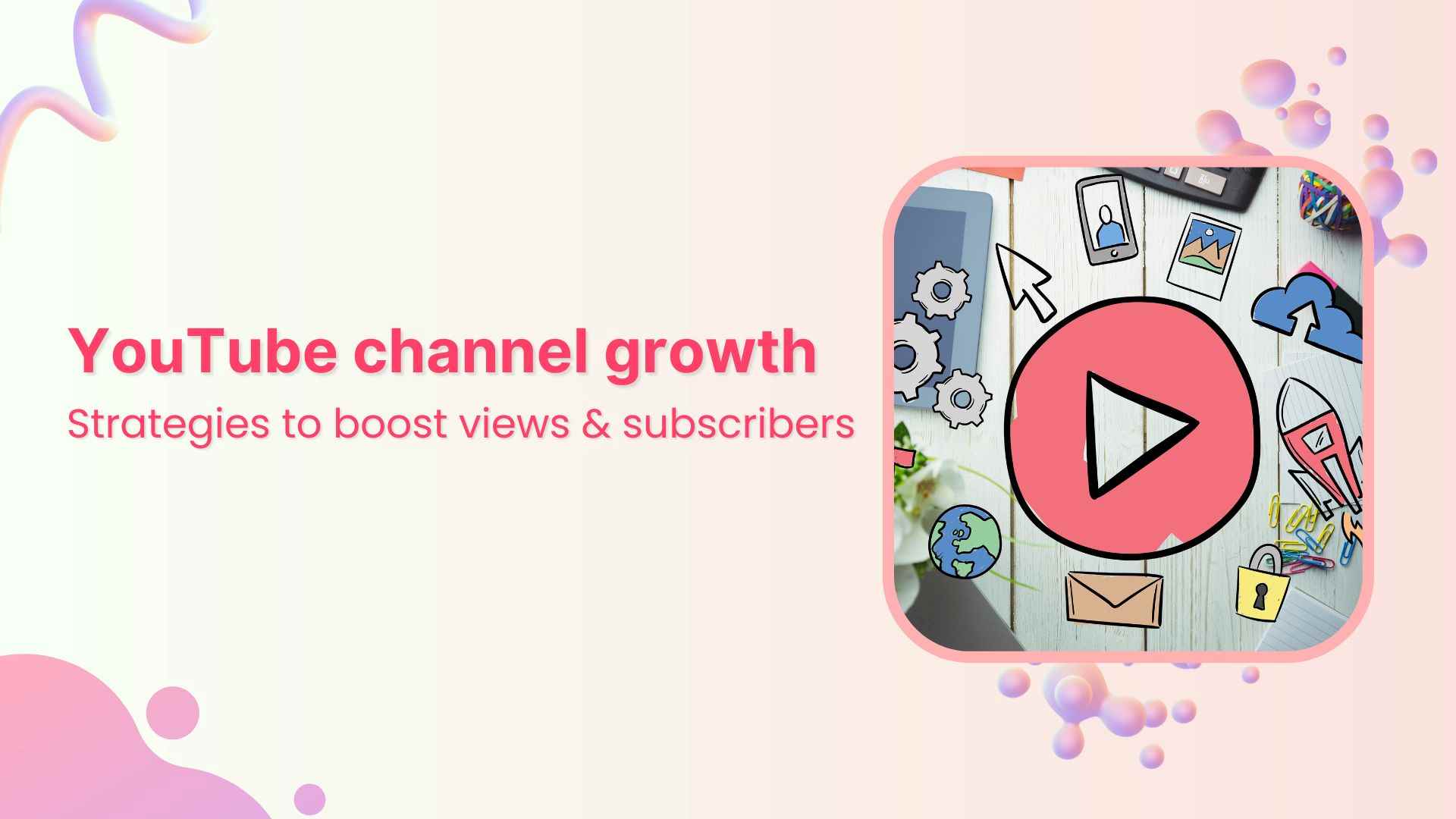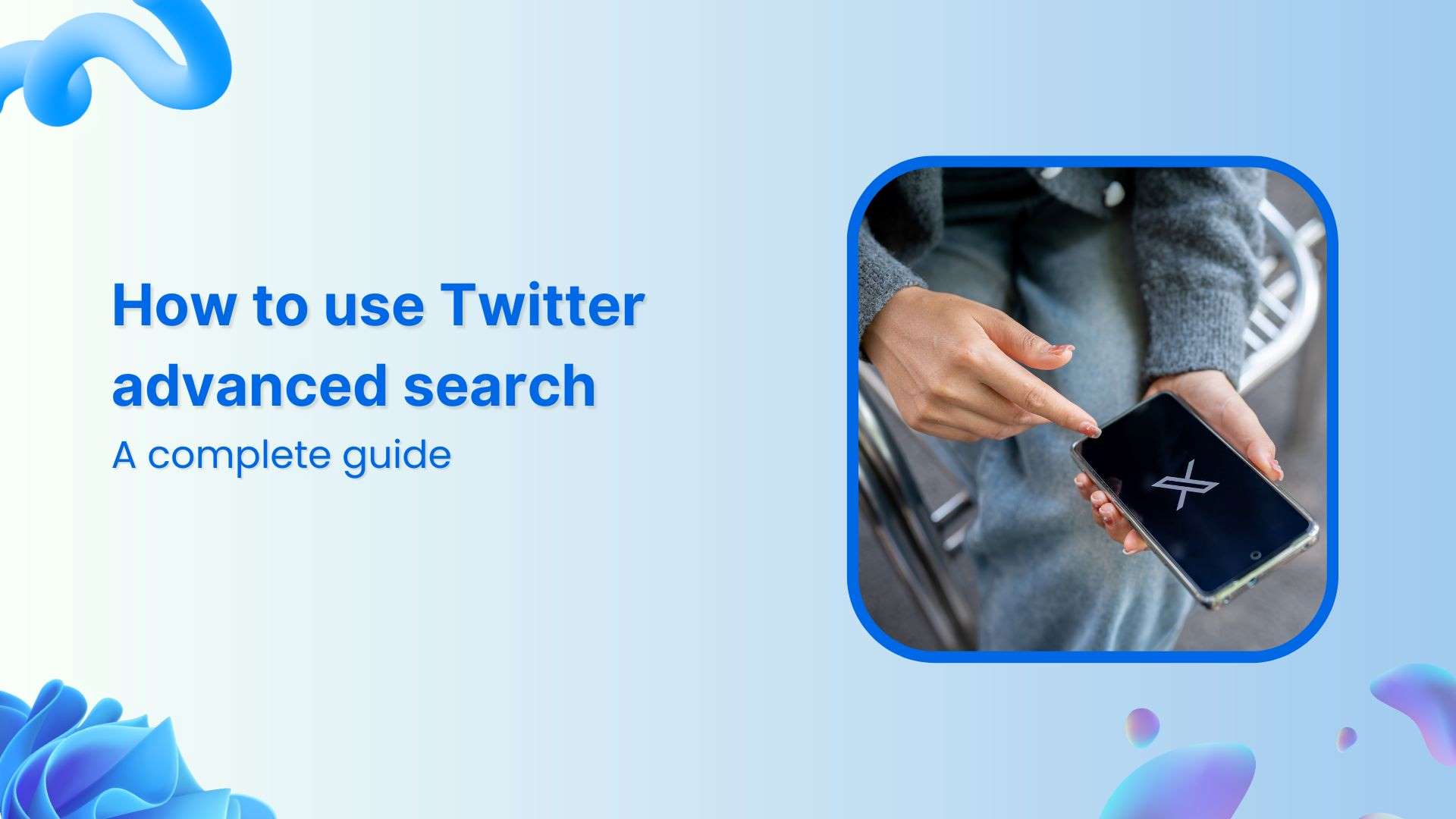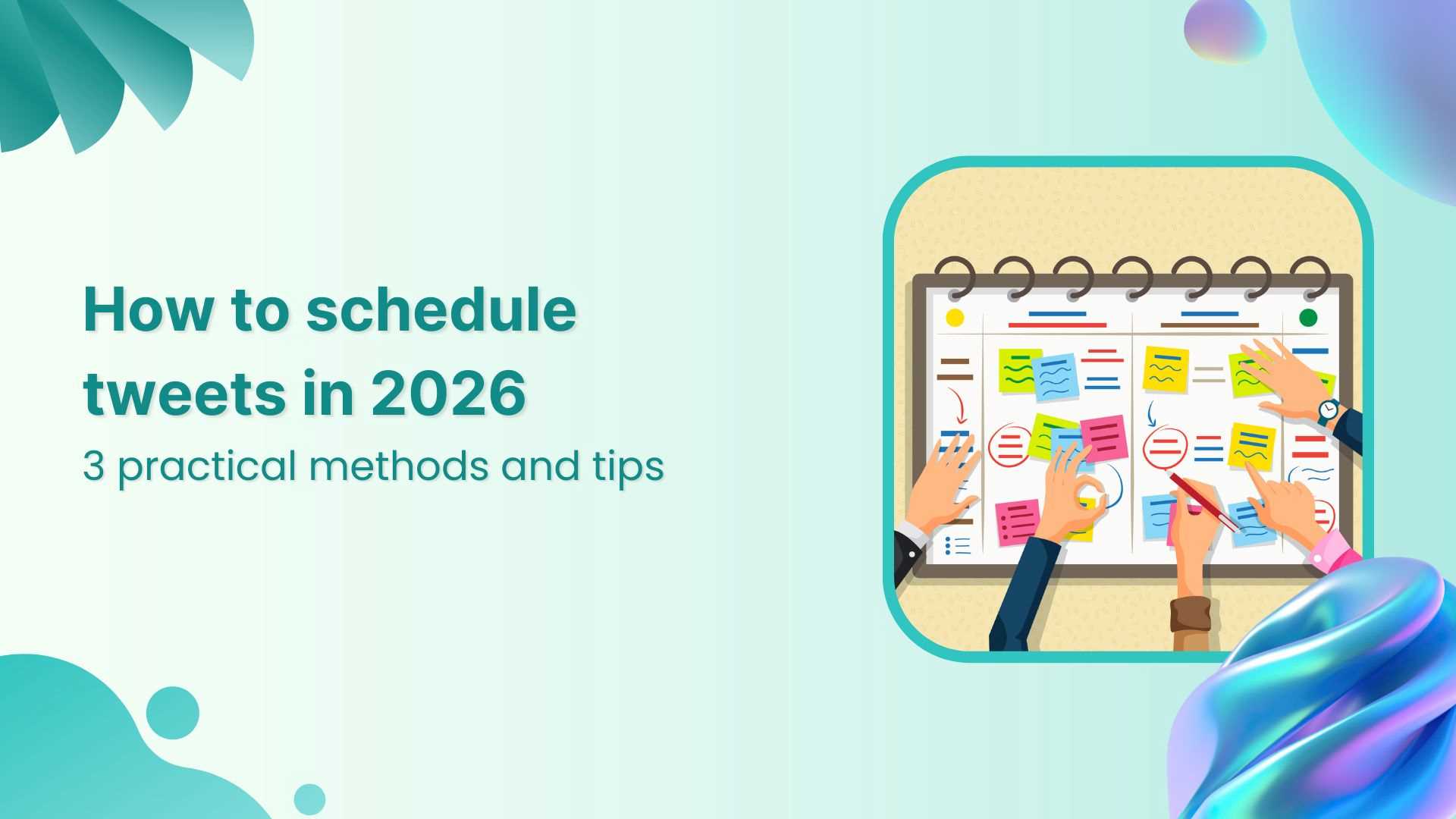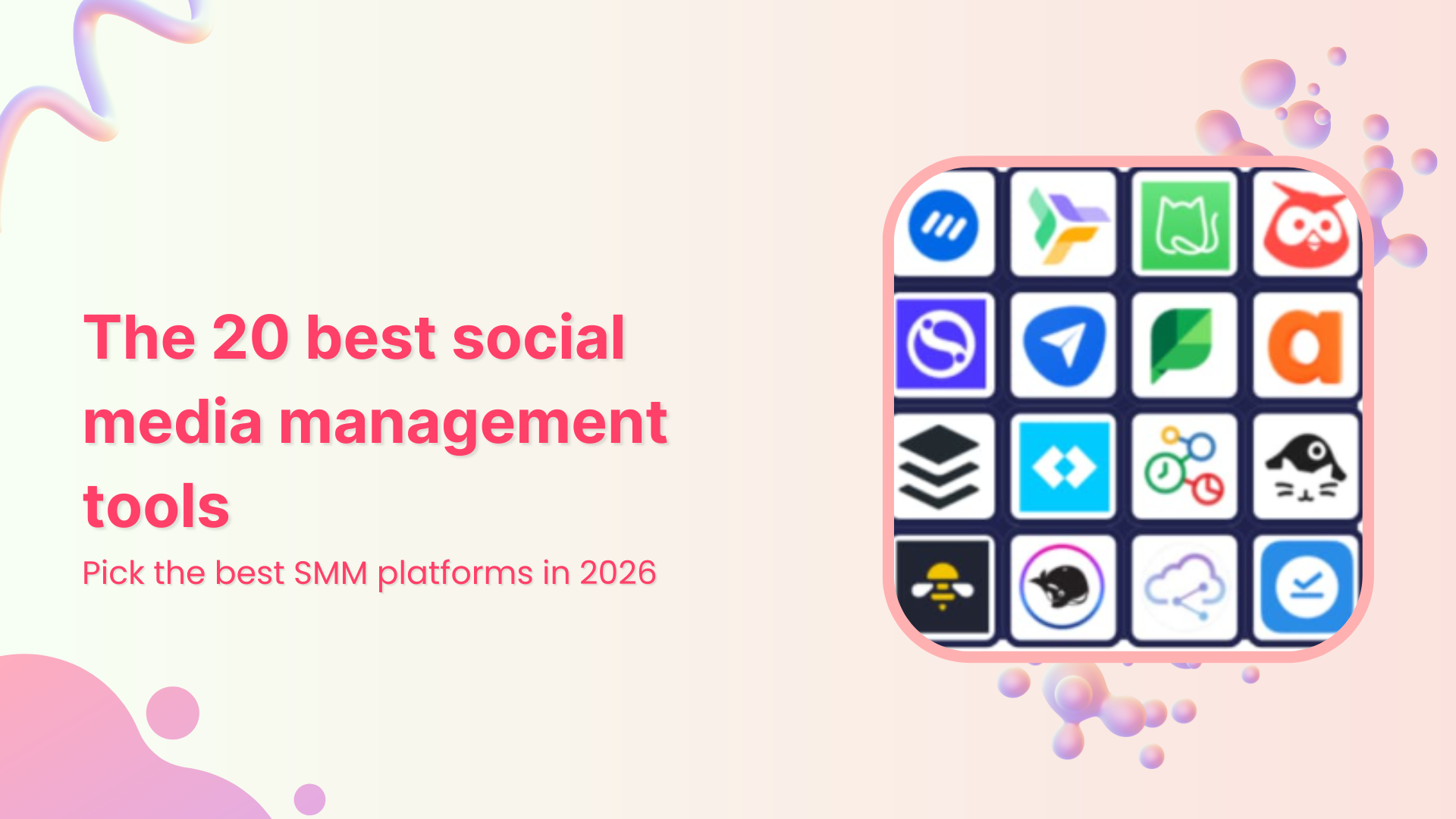Bulk-generate & schedule posts in seconds with Smart Scheduling. Try now!
Step-by-step guide to creating a social media posting schedule
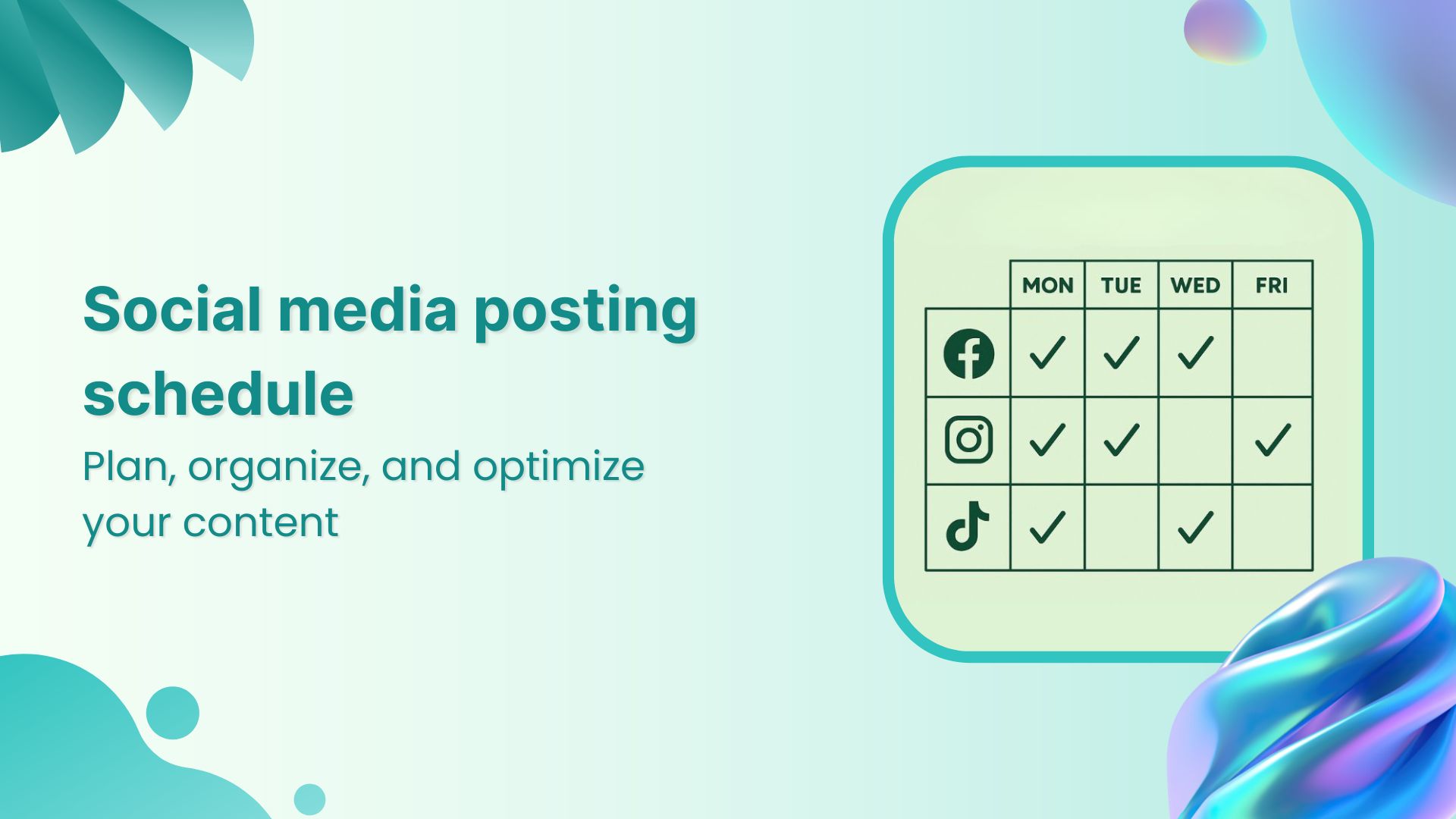
Do you often find yourself scrambling to post on social media, only to regret the timing or content later? You’re not alone. Many businesses struggle with this, leading to inconsistent and often ineffective social media presence. The key to avoiding this chaos is a well-planned social media posting schedule. Such a schedule ensures your posts reach the right audience at the right time, maximizing engagement and impact.
Imagine having a clear, strategic plan that outlines what to post, when to post, and where to post it. Ready to get started?
Let’s dive into the essentials of creating a social media posting schedule that can elevate your brand’s online presence.
What is a social media posting schedule?
A social media posting schedule is a strategic plan that outlines specific dates, times, and content to be published across various social media platforms. This organized timetable helps align your social media activities with your marketing goals and audience preferences. Think of it as a roadmap guiding your posts, ensuring consistency and relevance.
Given the highly competitive nature of the social media domain, where most businesses have a presence on at least one platform, a posting schedule is crucial. It prevents over-posting, which can overwhelm your audience, and under-posting, which can make you forgettable. Instead, it helps you hit that sweet spot where your content is eagerly anticipated and regularly consumed.
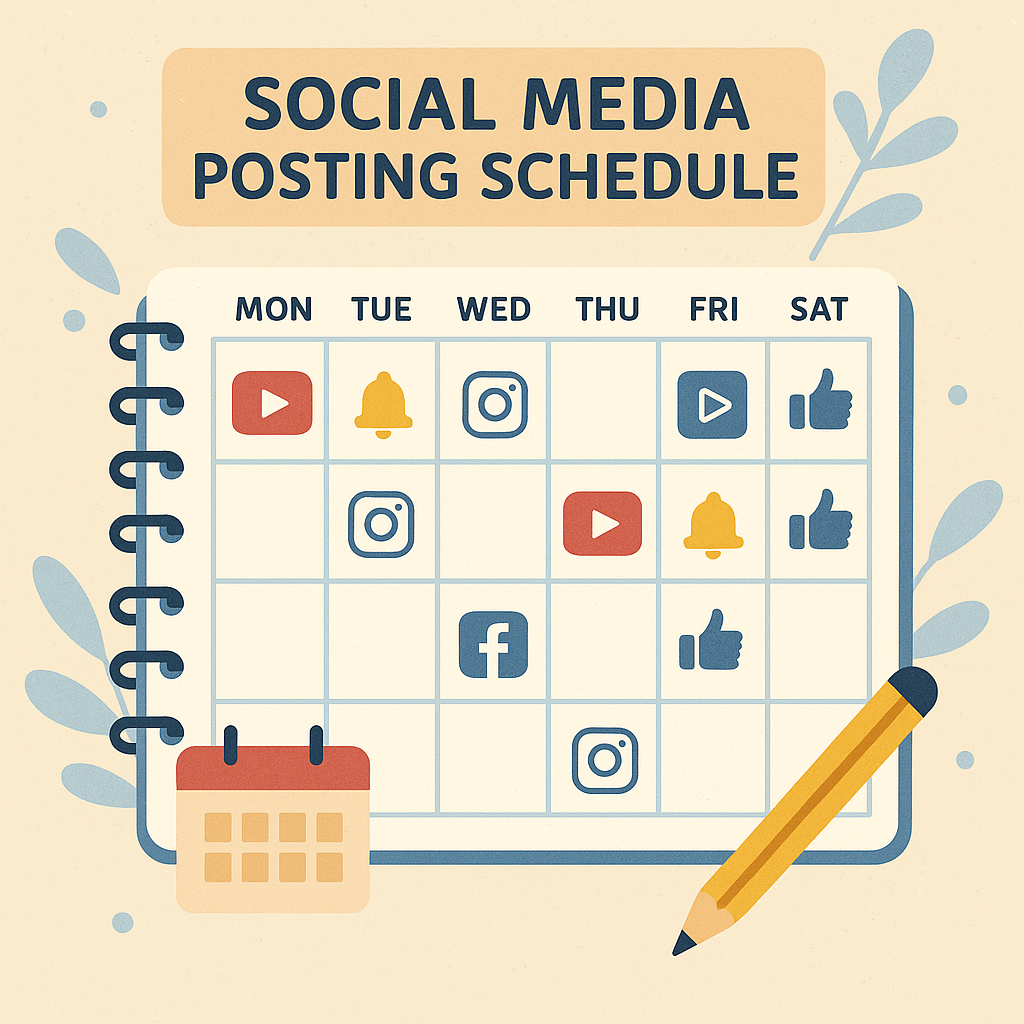
A well-crafted social media posting schedule also streamlines your workflow. It allows you to plan and create content in advance, saving you from last-minute stress and ensuring a steady stream of high-quality posts.
When and how often should you post on social media?
Effective social media scheduling requires knowing the best times to post and the optimal frequency for each platform. Here’s a guide to help you hit the sweet spot for maximum engagement.
1. Facebook
Frequency: 1–2 posts/day
Studies suggest that posting once a day is ideal for businesses with fewer than 10,000 followers. For larger audiences, increasing to two posts per day can enhance visibility and engagement without overwhelming your followers.
For instance, GoPro, with around 10 million followers on Facebook, follows a two-posts-a-day schedule, which makes sense given the brand’s large number of followers.
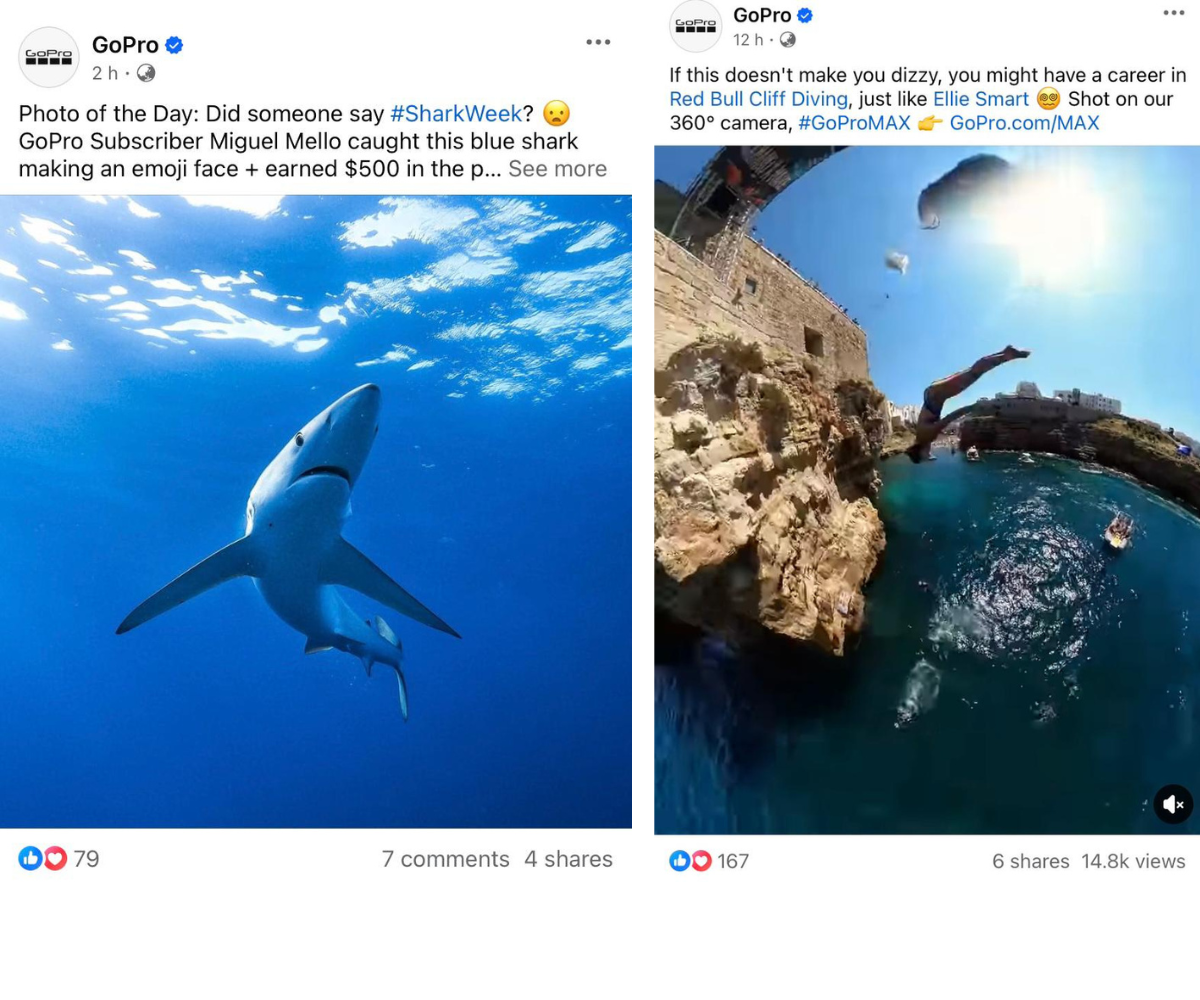
Timing: The best times to post on facebook are between 2:00 pm and 3:00 pM PST, particularly on Tuesdays and Wednesdays.
2. Instagram
Frequency:
- In-feed posts: 1–2 posts/day
- Stories: 2 Stories/day
Instagram’s head, Adam Mosseri, recommends posting 1–2 in-feed posts weekly and maintaining a daily presence with Stories due to their 24-hour lifespan. Experiment with various content types such as carousels, Reels, and single-image posts to see what resonates most with your audience.
Glossier, a well-known skincare and makeup brand, adheres to Mosseri’s guidelines by posting 2–3 Stories a day and one in-feed post every day.
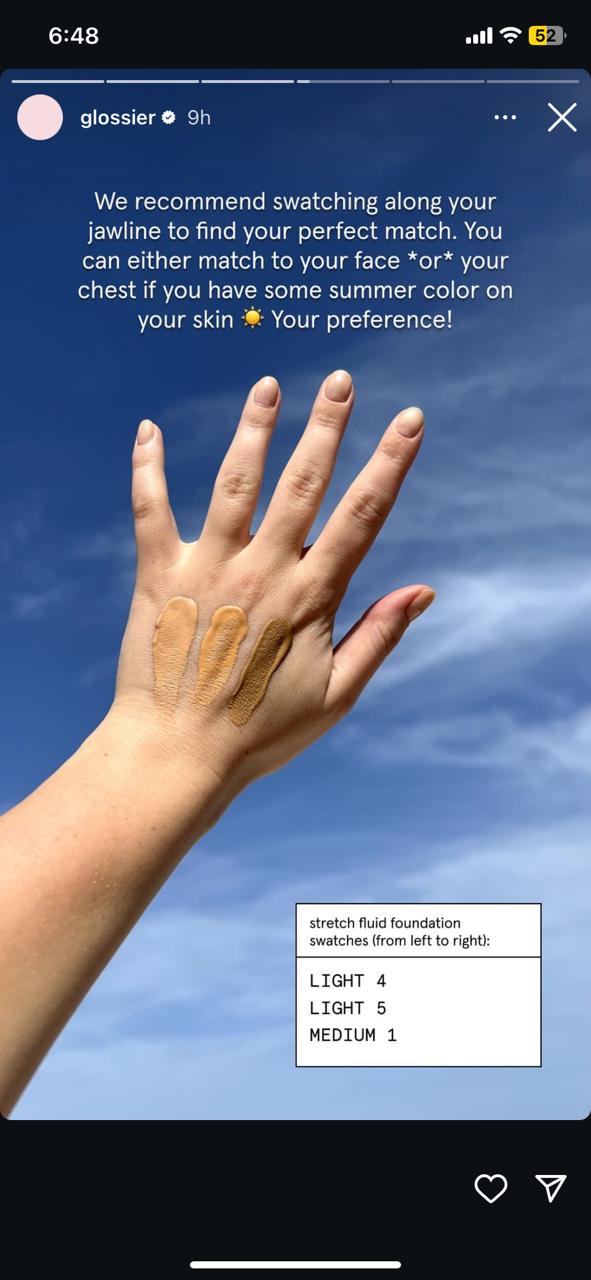
Timing: The optimal times to post are around 11:00 AM PST on Wednesdays and Thursdays, with a secondary peak at 2:00 PM PST on Fridays.
3. TikTok (now X)
Frequency: 1–4 posts/day
TikTok suggests posting 1 to 4 times daily, but starting with 3–4 posts per week is more realistic for small businesses. Increase your posting frequency by cross-posting and repurposing content from other platforms.
Merriam-Webster, with 1 million followers, has a very active social media presence on X, posting up to 3–4, and sometimes even 5, times daily.
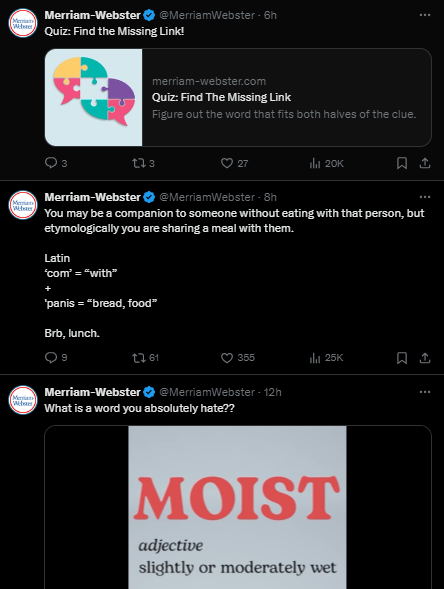
Timing: Optimal times include 7:00 AM PST on Mondays and 10:00 AM PST on Wednesdays. Tweets have a shelf life of about six hours, so spacing your posts throughout the day is crucial.
4. LinkedIn
Frequency: 1 post/day
LinkedIn recommends businesses post daily for maximum engagement. Even one post per week can double your engagement rate. Given the platform’s professional audience, focus on high-quality, relevant content. Additionally, varying your content types, such as articles, videos, and polls, can help maintain engagement and interest.
For instance, McKinsey & Company, a management consulting firm with up to 6 million followers on LinkedIn, frequently posts financial insights for different industries, making their content highly relevant and useful. They adhere to a daily posting schedule and occasionally post twice a day.
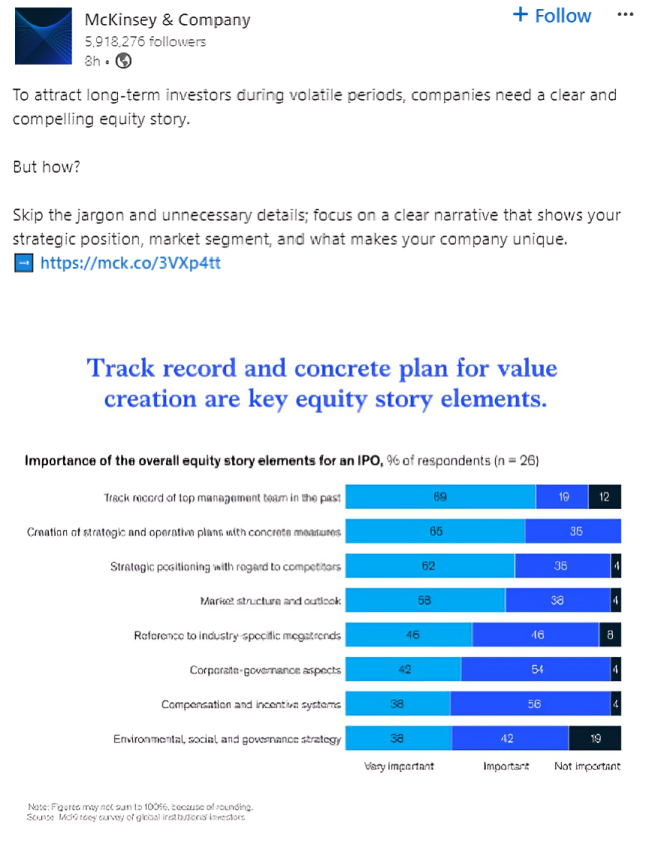
Timing: The best times to post are between 9:00 AM and 10:00 AM PST on weekdays, particularly Tuesdays and Wednesdays.
5. Pinterest
Frequency: 15–25 pins/day
While Pinterest suggests posting at least once a week, successful users often pin up to 25 times daily. Focus on quality over quantity, creating fresh pins rather than duplicating old ones.
Benefit Cosmetics, for instance, has a vibrant Pinterest feed, pinning at least 9–12 times a day.
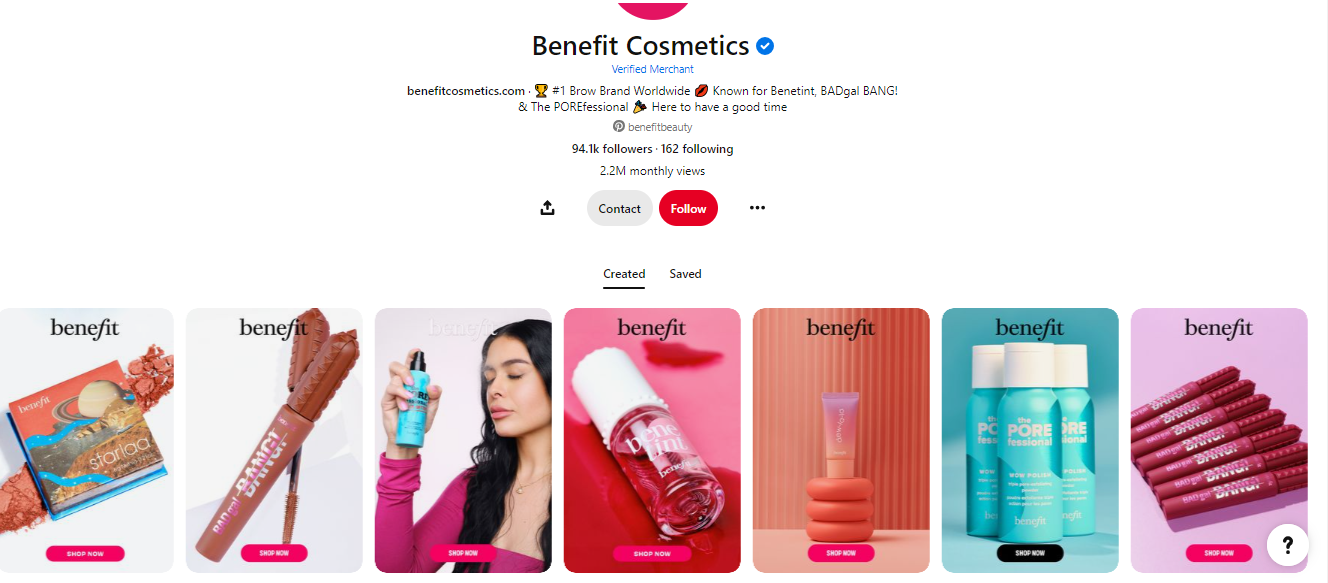
Timing: The best time to post is around 12:00 PM PST on Tuesdays and Fridays, as users are often planning projects or seeking inspiration during these periods.
6. YouTube
Frequency:
- Videos: 1 video/week
- Shorts: 1–3 videos/week
For long-form content, posting once a week is effective. YouTube Shorts, which are quicker to produce, can be posted up to three times a week. Consistency is key to keeping your audience engaged.
For instance, Cocomelon, an American YouTube channel known for posting nursery rhymes and one of the top 10 accounts with the most subscribers, adheres to a schedule of posting two videos per week.
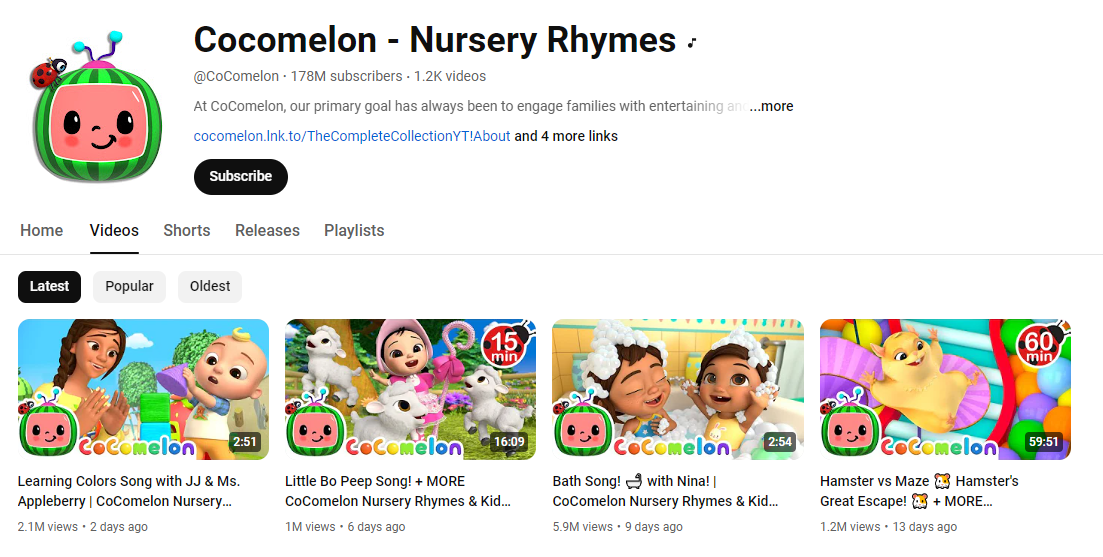
Timing: The optimal time to post is between 12:00 PM and 3:00 PM PST on weekdays, with a focus on Wednesday and Thursday afternoons.
Is there any ideal posting time?
Remember, there’s no universal “right number” for posting on social media. The optimal frequency depends on your audience, industry, and the amount of content you can sustainably produce. Start with the recommended guidelines and adjust based on your engagement metrics and audience feedback. By maintaining a consistent posting schedule tailored to your capacity, you can maximize your social media impact and achieve your marketing goals.
Steps to crafting the perfect posting schedule
Creating an effective social media posting schedule requires strategic planning and a deep understanding of your audience. Here’s a step-by-step guide to help you craft the perfect schedule that aligns with your business goals and maximizes engagement.
1. Identifying your social media goals
The first step in crafting a social media posting schedule is to clearly define your goals. What do you hope to achieve with your social media efforts?
Common social media goals include:
- Increasing brand awareness: Growing your audience and ensuring your brand is recognized.
- Driving website traffic: Directing followers to your website for more information, products, or services.
- Boosting engagement: Encouraging likes, comments, shares, and interactions with your content.
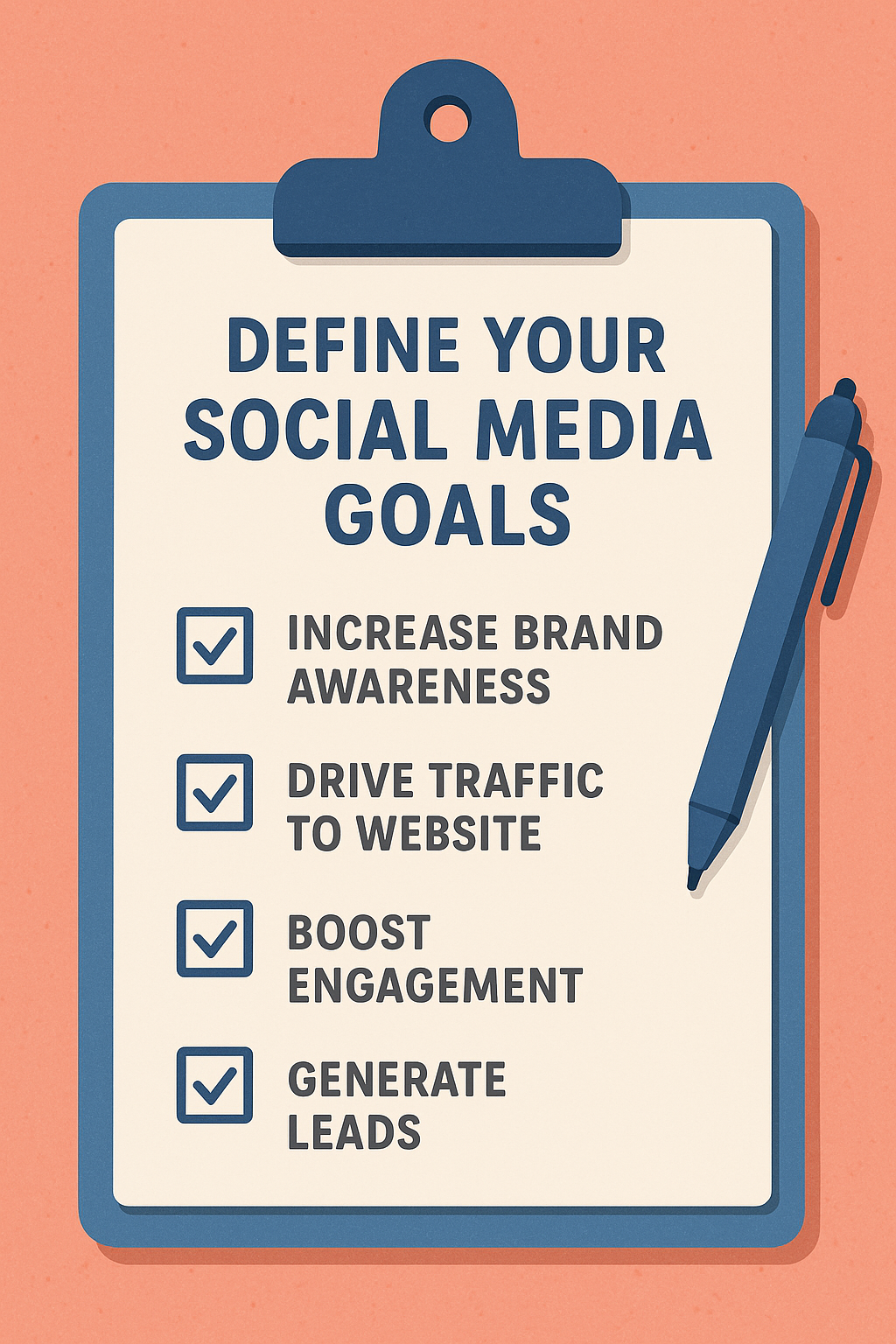
- Generating leads: Capturing potential customer information for future follow-up and sales.
- Enhancing customer service: Using social media as a platform to respond to customer inquiries and feedback.
Clearly defined goals will guide your content creation and posting frequency, ensuring each post serves a purpose.
2. Analyzing your target audience’s behavior
Understanding your target audience is crucial for effective social media scheduling. Analyze their behavior to determine when they are most active and what type of content they engage with the most. Key factors to consider include:
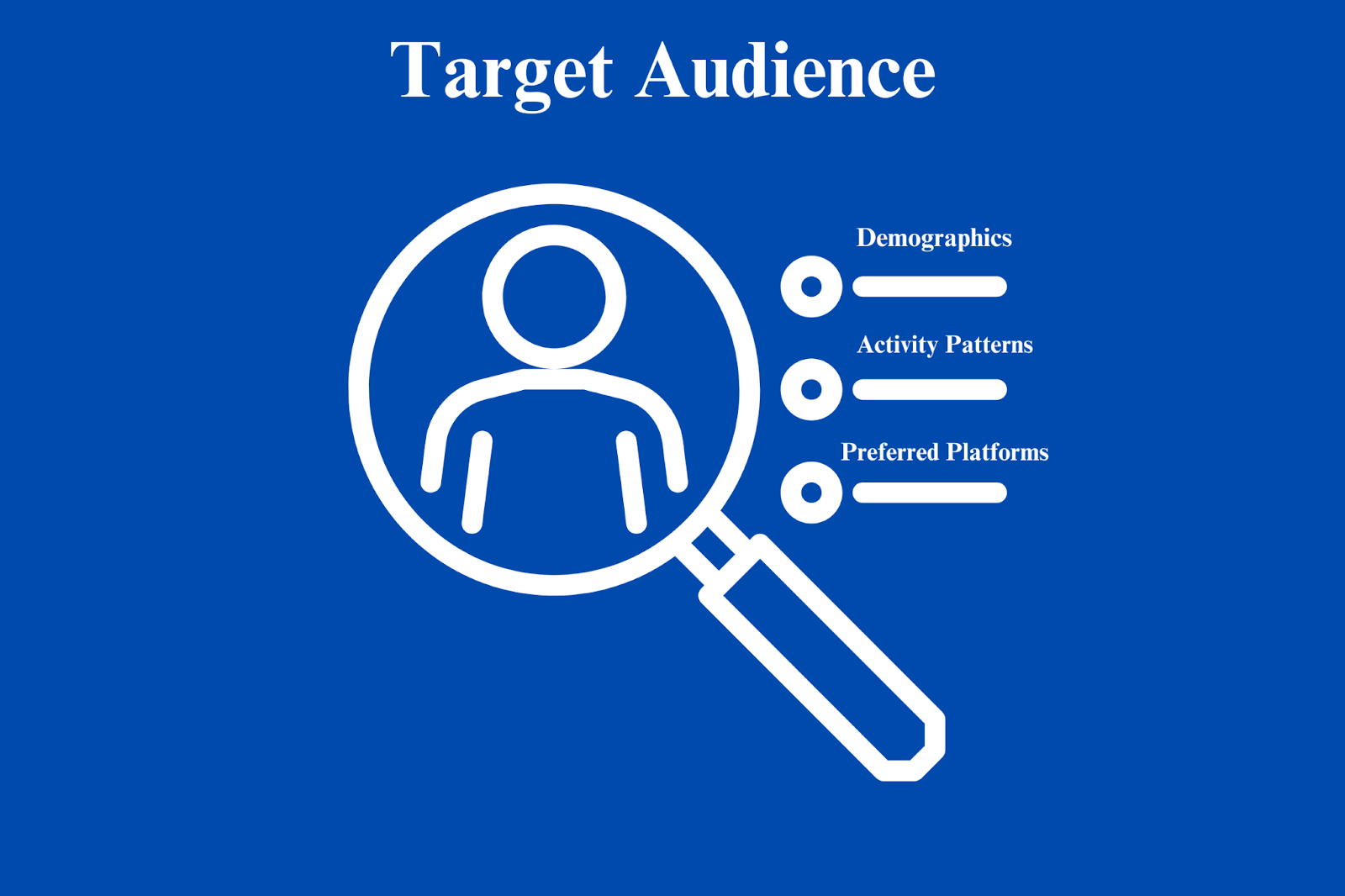
- Demographics: Age, gender, location, and interests.
- Activity patterns: When your audience is online and engaging with content.
- Preferred platforms: Which social media channels they use most frequently.
Use analytic tools provided by social media platforms to gather this data. For instance, Instagram Insights, Facebook Analytics, and Twitter Analytics can offer valuable insights into your audience’s habits and preferences.
3. Key elements of a successful social media strategy
A successful social media strategy involves more than just posting content regularly. Here are some key elements to incorporate:
- Engagement: Prompt interaction with your content through questions, contests, and calls to action. Respond to comments and messages to build a community.
- Quality over quantity: Focus on producing high-quality content that provides value to your audience. This can include educational posts, entertaining videos, or insightful articles.
- Uniform branding: Maintain uniform branding across all social media platforms. This includes using the same logo, color schemes, and tone of voice. Consistency helps in building brand recognition and trust. For example, your posts on Instagram, Facebook, and LinkedIn should all reflect the same visual and textual style, reinforcing your brand identity.
- Analytics and feedback: Regularly analyze your social media performance using analytics tools. Track metrics such as engagement rates, click-through rates, and follower growth. Use this data to understand what works and what doesn’t, and adjust your strategy accordingly. Additionally, seek feedback from your audience to gain insights into their preferences and expectations, ensuring your content remains relevant and engaging.
4. Content diversity and planning
Diversifying your social media content is essential for maximizing reach and engagement. To effectively plan, start by identifying recurring themes and events relevant to your brand, such as holidays, product launches, and sales. Create a content calendar to organize your posts and ensure you cover all necessary topics without duplication.
Incorporate a mix of social media content types, including single images, infographics, carousels, videos, Lives, stories, testimonials, surveys, and reels. For example, schedule a carousel on Monday, a Reel on Tuesday, a single photo on Wednesday, a video on Thursday, and a Live on Friday.
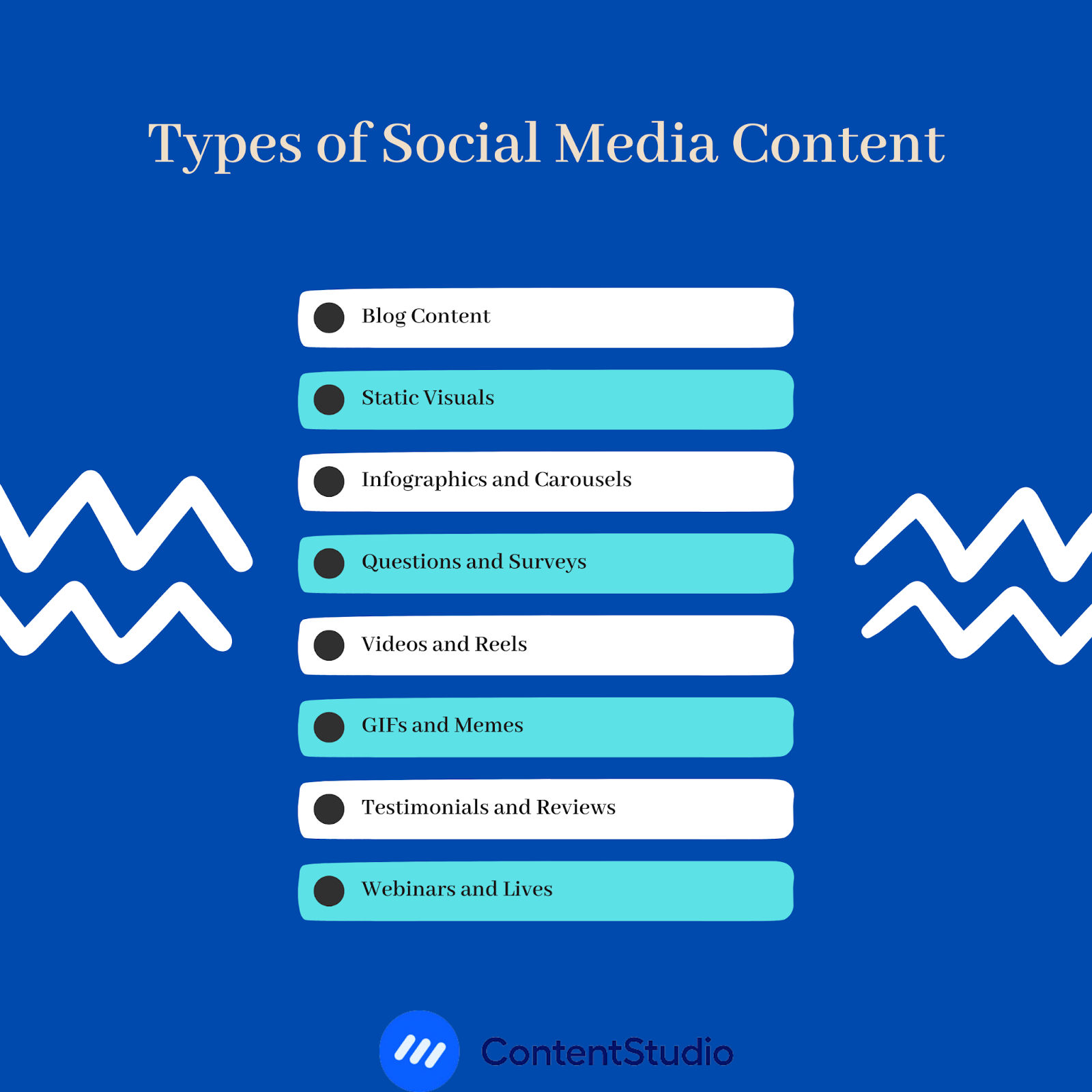
Video content is particularly important as platforms like Instagram are shifting towards more video. Engaging your audience with interactive content, such as polls and questions, can also drive more interactions and boost visibility.
5. Consistency versus overposting: Finding the balance
Striking the right balance between consistency and overposting is crucial. Posting too frequently can overwhelm your audience while posting too little can make you forgettable. Follow general posting frequency guidelines, but adjust based on your audience’s engagement patterns and your business goals.
Monitor the performance of your posts to see what works best. Be flexible and willing to adjust your posting schedule based on performance data. If you notice engagement dropping, it might be time to scale back or diversify your content.
Best practices for scheduling posts across different platforms
Effectively scheduling posts across different social media platforms requires strategic planning and an understanding of each platform’s unique characteristics. Here are six best practices to help you navigate this process and maximize your social media impact.
- Tailor your content
Each social platform has its own audience and style. To boost engagement, tailor your content accordingly , use a professional tone on LinkedIn and a visual, relaxed style on Instagram.
For example, during the ClickUp 3.0 launch, the company shared a feature-focused carousel on Instagram, while the founder posted a reflective announcement on LinkedIn. Both aligned with the platform’s tone, showing a smart, adaptable content strategy.
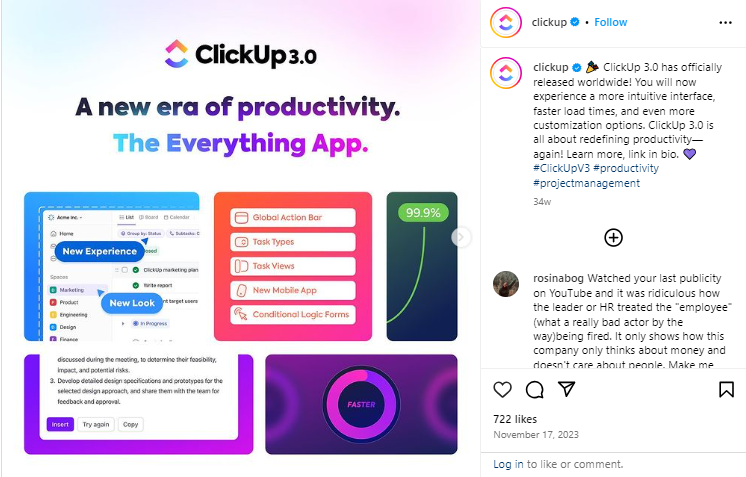
And then on LinkedIn:
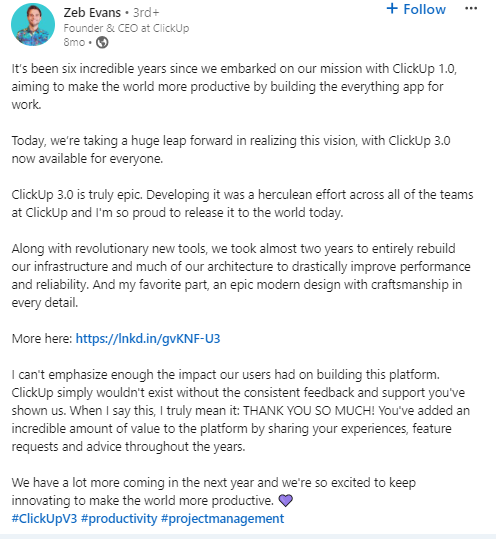
- Schedule your posts
Timing is crucial in social media. To reach your audience when they are most active, schedule your posts for optimal times on each platform. Avoid posting the same content simultaneously across all platforms to prevent audience saturation.
Instead, stagger your posts to reach different segments of your audience at different times. Use a scheduling tool like ContentStudio to plan posts for different times, and leverage the platform’s “best time to post” feature to determine the ideal posting times for your specific social media accounts.
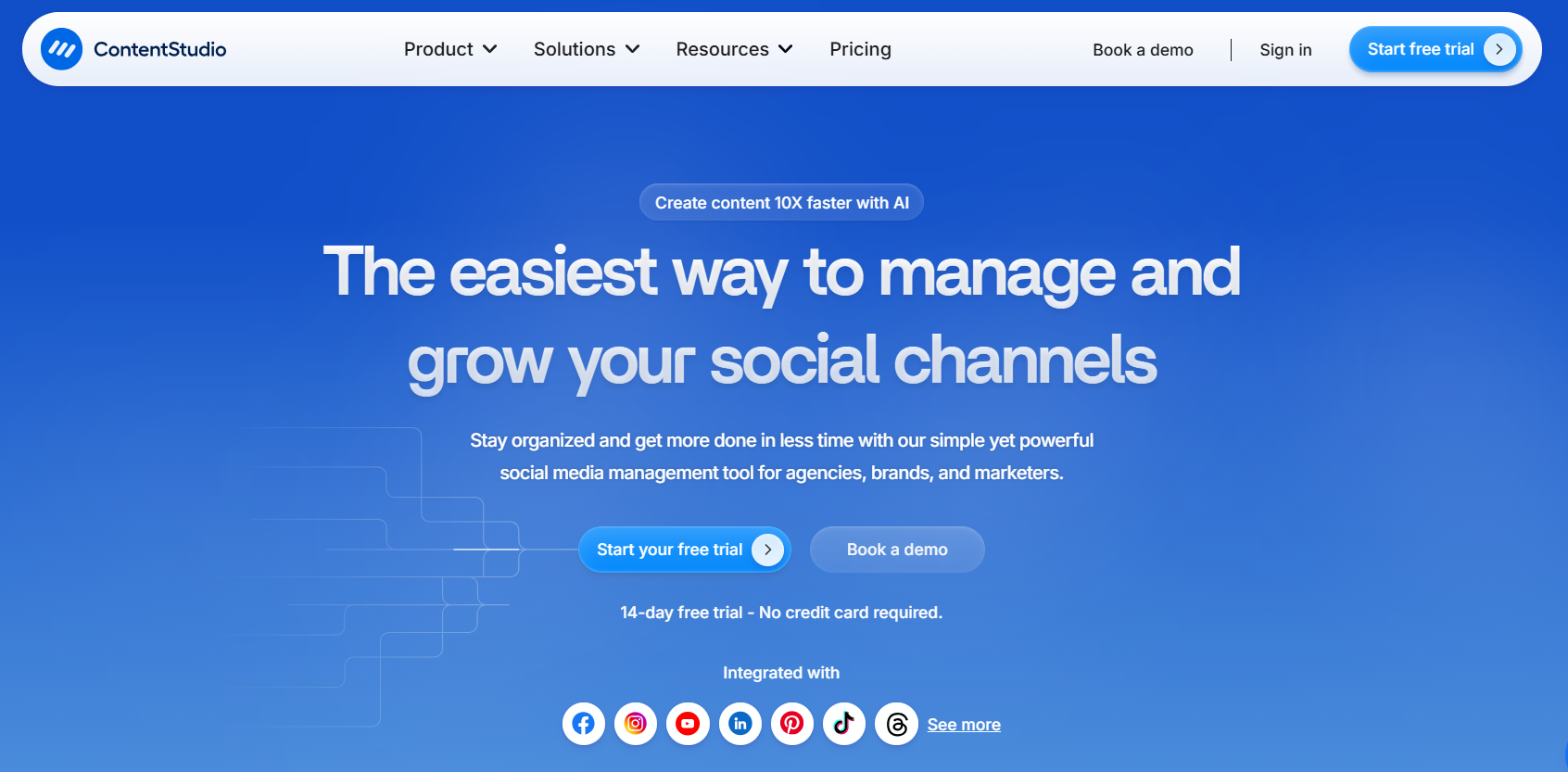
- Use platform-specific features
Each social media platform offers unique features that can enhance your content’s visibility and engagement. Utilizing these features can significantly boost your cross-posting efforts.
For example, Instagram has Stories and Reels, while Facebook offers Live, Groups, and Events. By leveraging these platform-specific tools, you can create content that is not only more engaging but also more likely to be favored by the platform’s algorithm, increasing your content’s reach.
- Don’t overdo it
Overposting can be detrimental to your social media strategy. Posting the same content multiple times a day across different platforms can come across as spammy, potentially leading to audience fatigue and unfollows. Mix up your content to keep it fresh and engaging.
Vary the types of posts, use a mix of images, videos, carousels, and text posts. This diversity not only keeps your content interesting but also caters to different preferences within your audience.
For instance, you can see below how McKinsey & Co. uses a range of different content formats, from reels to static images to carousels, to keep their audience engaged and their content varied.
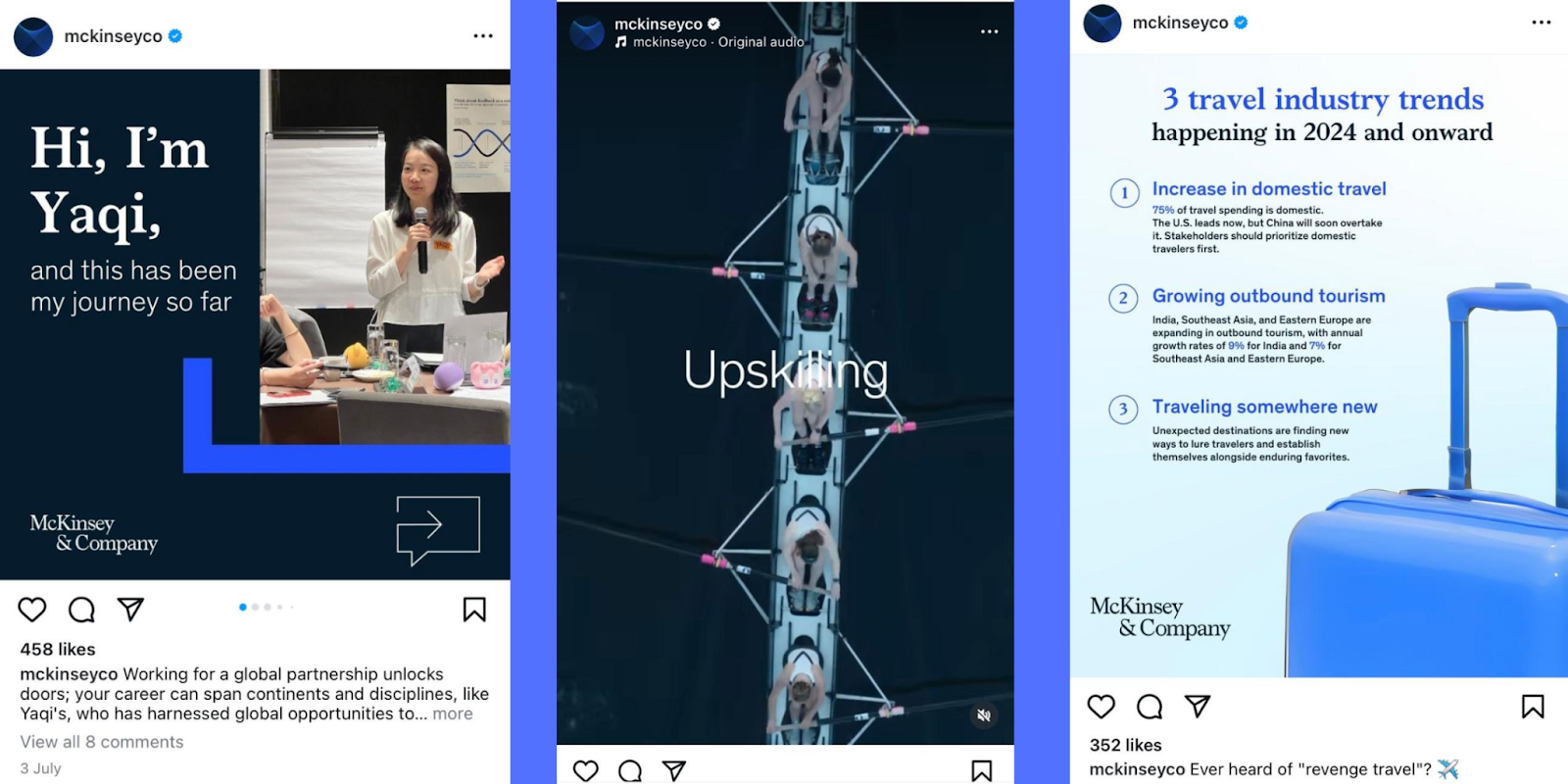
- Optimize your visuals
Visual content plays a crucial role in social media engagement. Ensure your images and videos are optimized for each platform by adhering to the recommended aspect ratios and quality standards.
For instance, Instagram prefers square images (1080 x 1080 pixels) and vertical videos (1080 x 1920 pixels), while X(Twitter) favors landscape images (1600 x 900 pixels). Properly optimized visuals enhance your posts’ appearance and performance, making them more likely to capture attention and drive engagement.
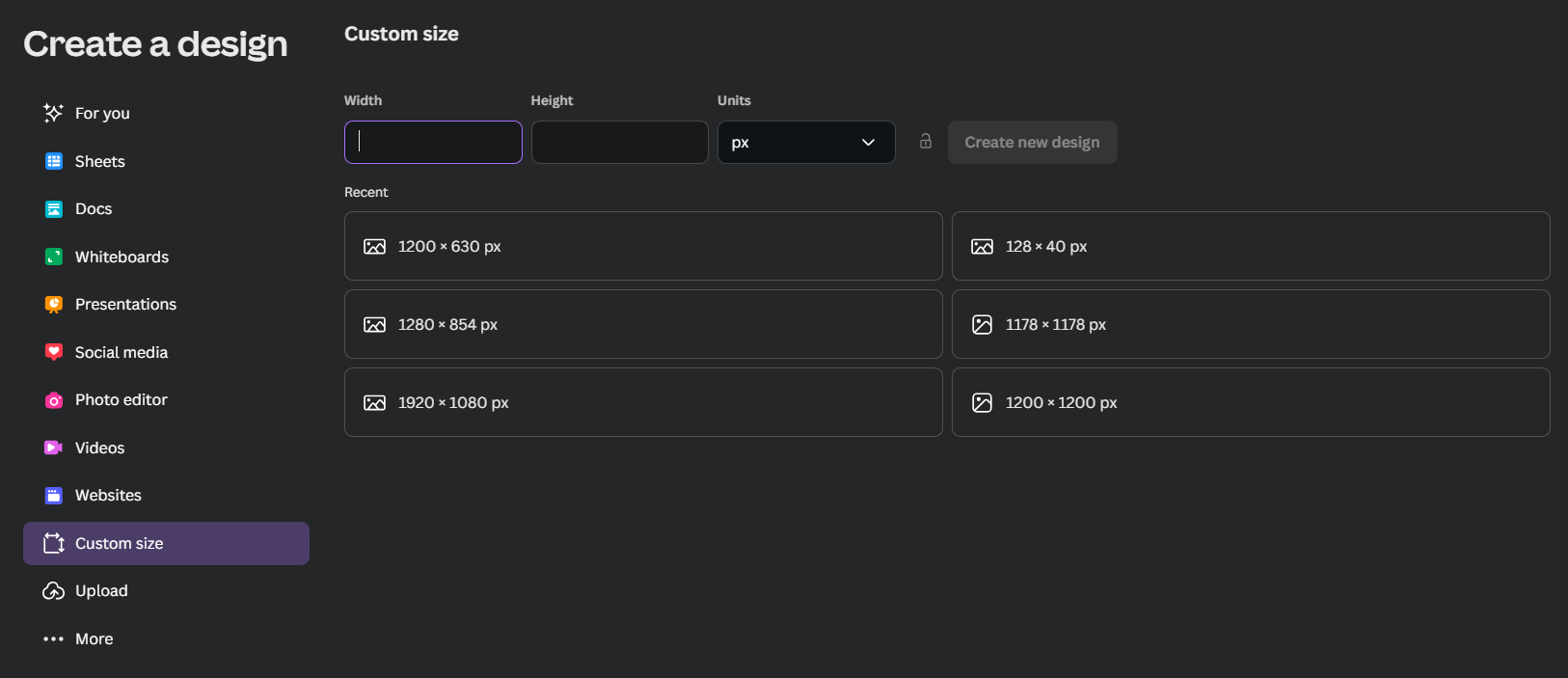
Use tools like Canva to create platform-specific visuals. Ensure each image or video is the right size and resolution for the platform you’re posting on to maintain a professional and engaging appearance.
Conclusion
Creating a well-planned social media posting schedule helps ensure your content reaches the right audience at the right time, maximizing engagement and impact. It involves strategic planning, understanding platform nuances, and maintaining consistency. A structured posting schedule is crucial for building a loyal audience and achieving your social media goals. It transforms a chaotic posting strategy into a coherent, effective plan.
As the world of social media changes given the new features and algorithms, staying adaptable and informed about platform changes and audience preferences will be key. Leveraging new tools and features will help keep your strategy effective and engaging. Remember, success in social media marketing comes from consistency, quality, and adaptability. Embrace these elements, and watch your online presence flourish.
The easiest way to manage and grow your social channels.
Try ContentStudio for FREE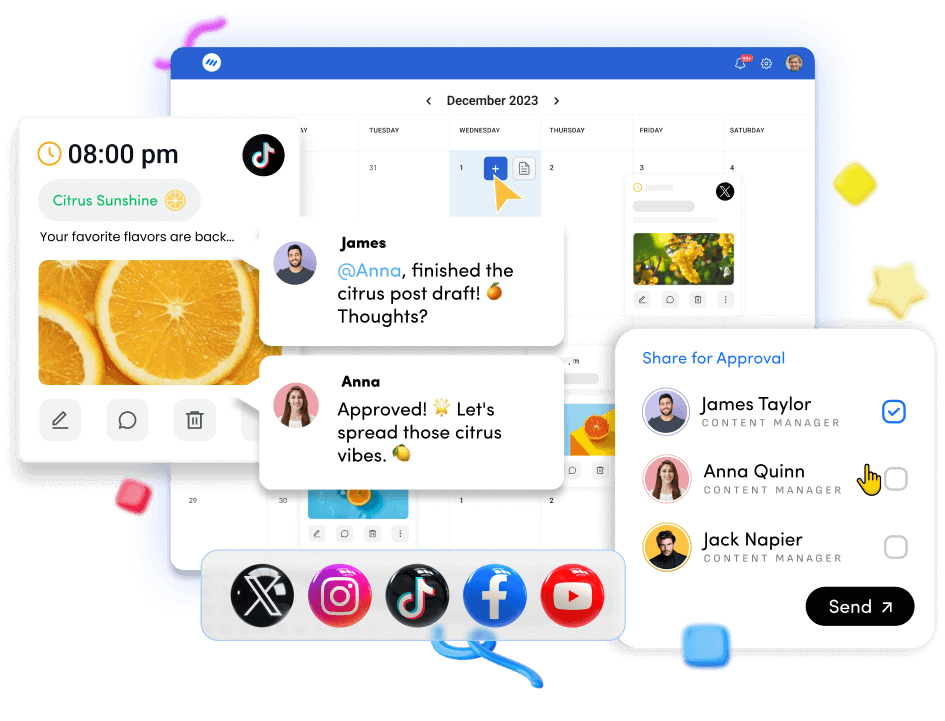
Frequently asked questions
What is the best social media posting schedule?
The best social media posting schedule varies by platform and audience. Generally, aim for 1-2 posts per day on Facebook and Instagram, 3-4 tweets daily on X(Twitter), and 1 post daily on LinkedIn. Adjust frequency based on audience engagement and platform-specific best practices.
What is the best time to post on social media?
The optimal time to post on social media depends on your audience and platform. Generally, the best times are mid-morning and early afternoon. For example, Facebook posts perform well around 9:00 AM PST, while Instagram engagement peaks at 11:00 AM PST.
Can you schedule social media posts?
Yes, you can schedule social media posts using tools like ContentStudio. These tools allow you to plan and automate posts across multiple platforms, ensuring consistent and timely content delivery without manual intervention.
Recommended for you
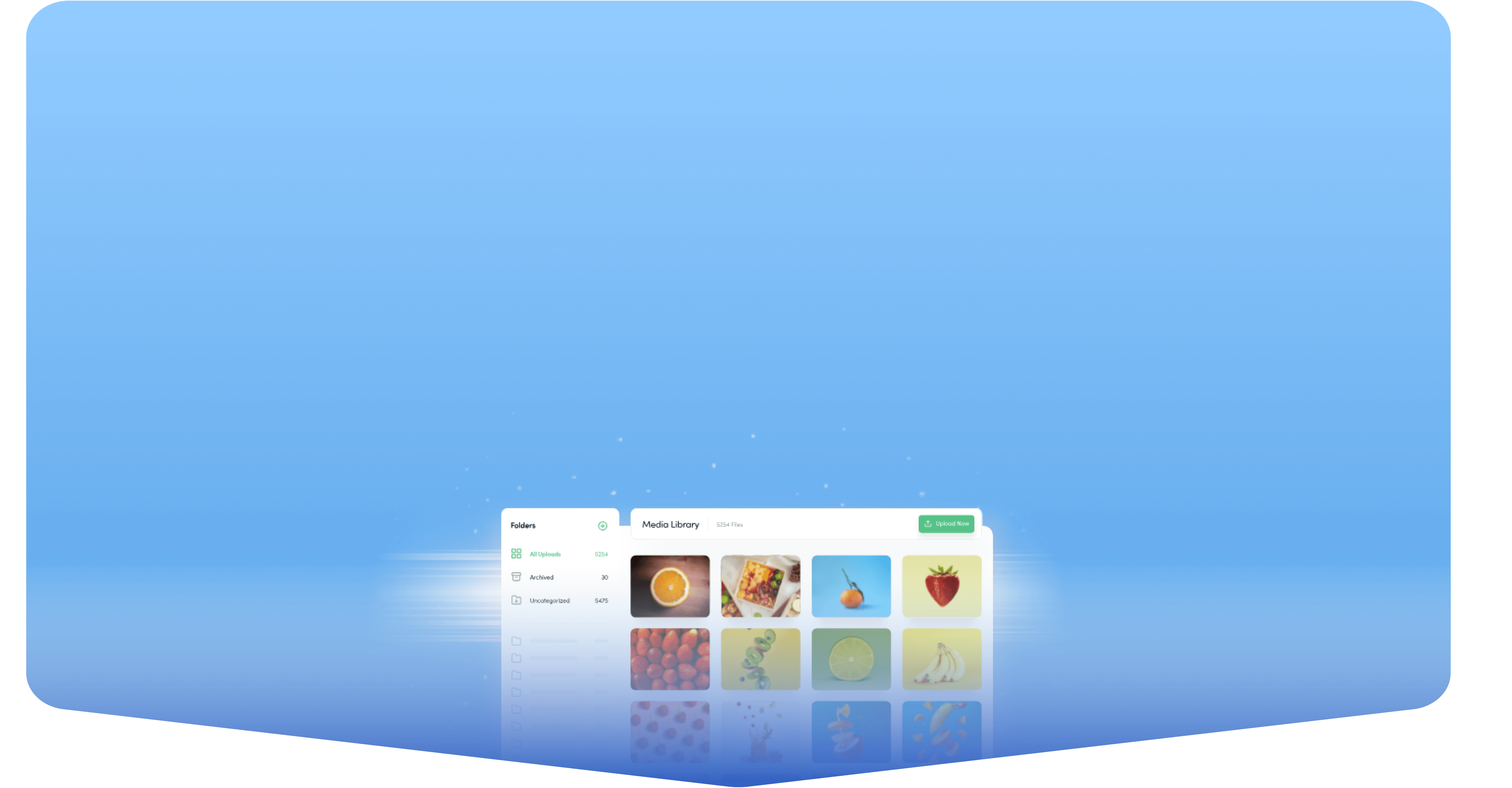
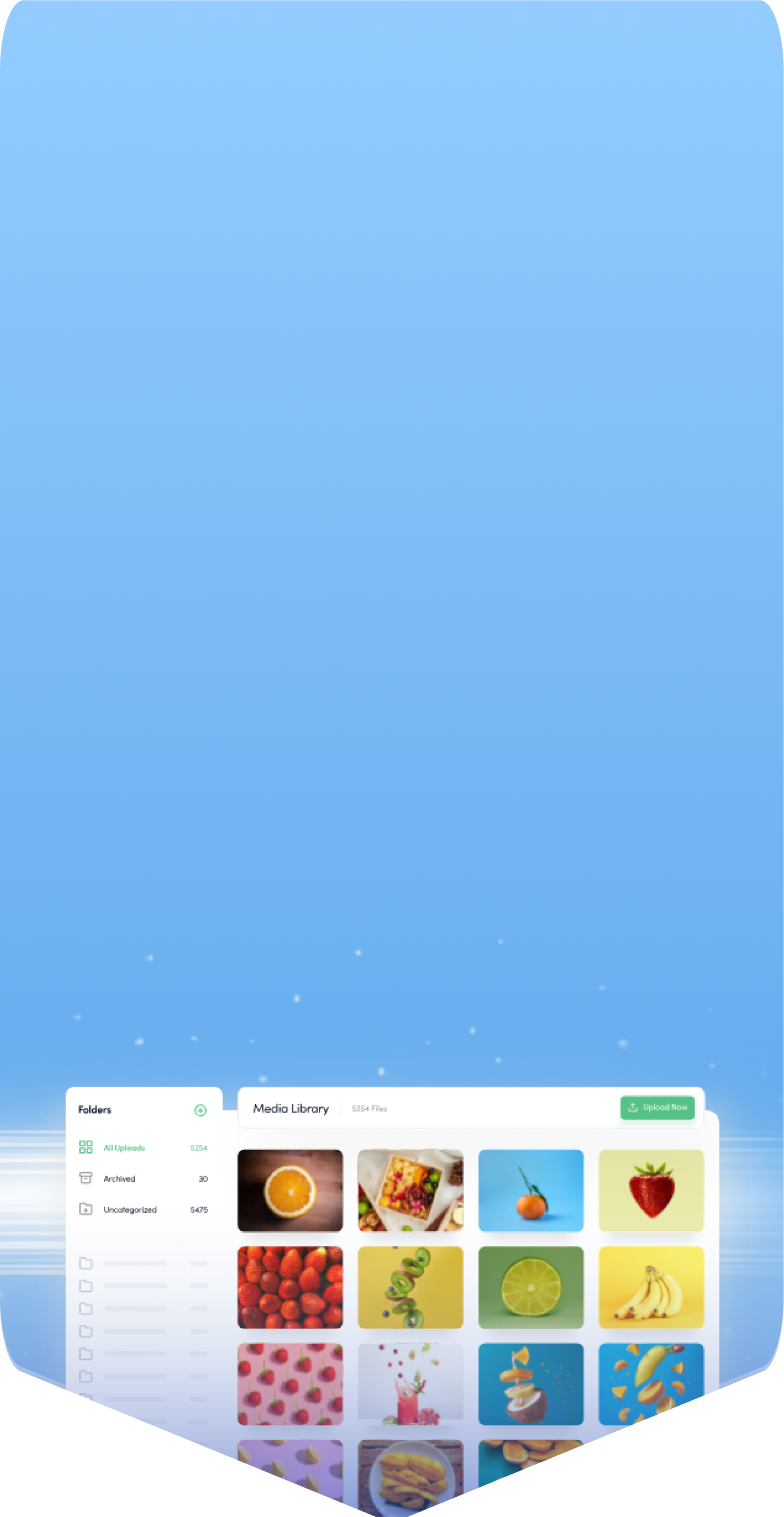
Powerful social media management software
14-day free trial - No credit card required.
